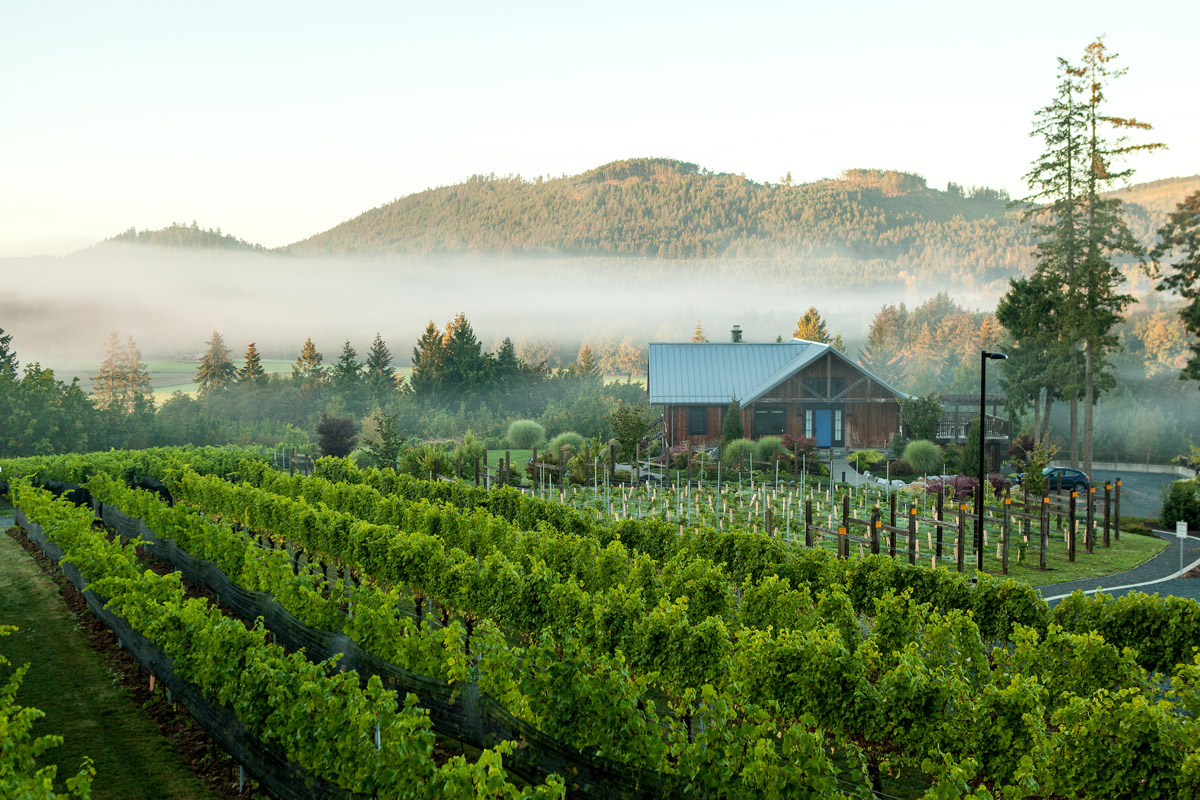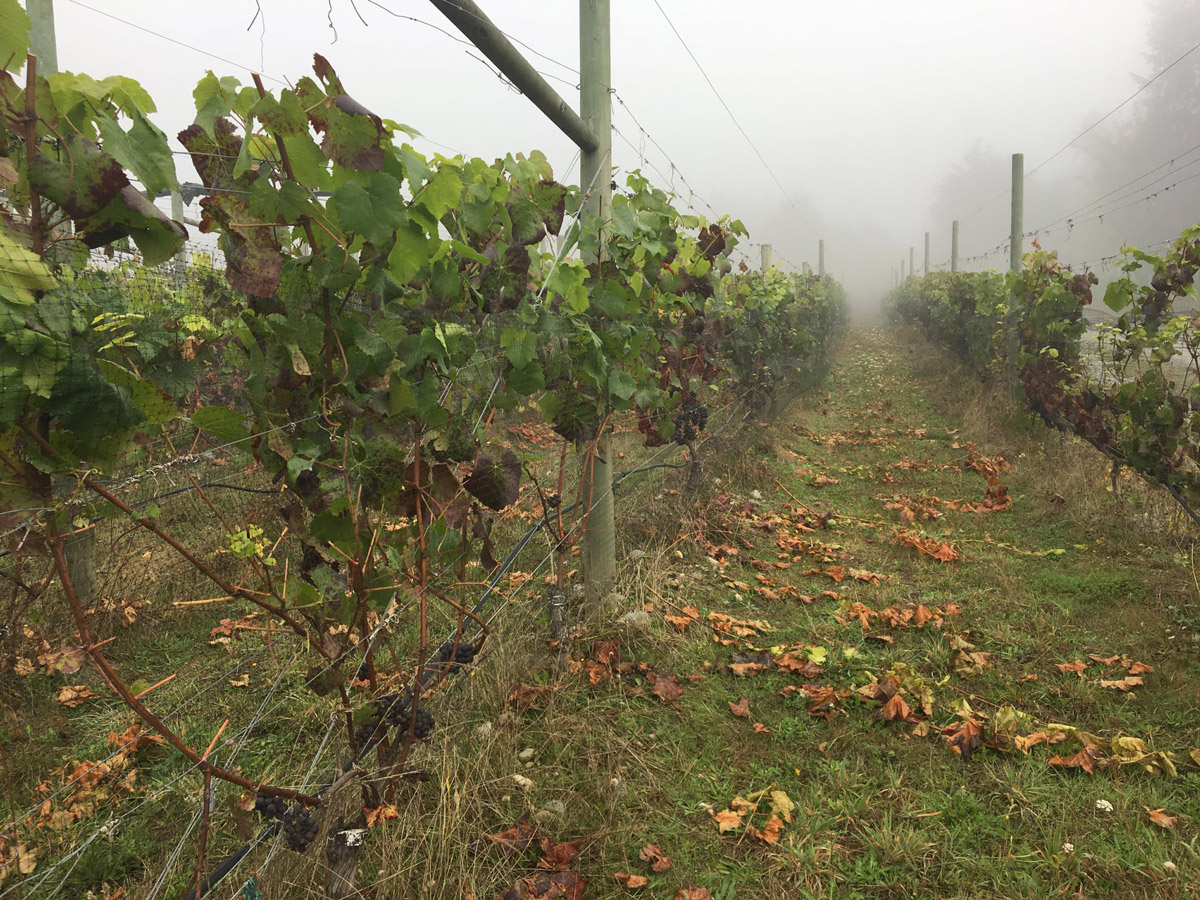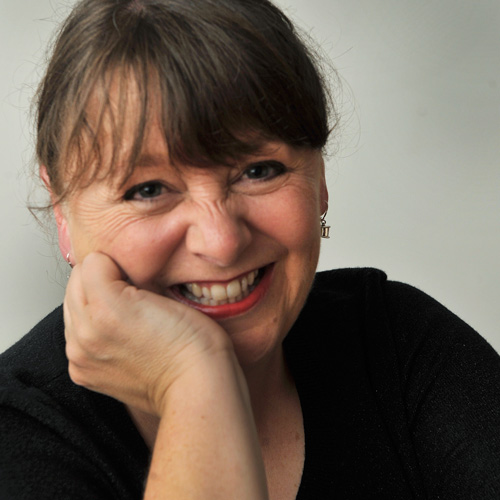
Wine Culture Magazine

Mist drifts over Blue Grouse Estate Winery, one of several on Vancouver Island that have recently added Chardonnay to their lineup. Jacqueline Downey photo
Every once in a while you taste a wine so electrifying you just can’t stop raving about it. Last year, that wine for me was the 2019 Unsworth Chardonnay, the first the Cowichan Valley winery ever produced. Citrusy and mineral-driven, with a thrilling saline finish, it reminded me of some of my favourite wines from Chablis or northern Spain.
I’m not the only one who was smitten—it earned 88 points and a Bronze Medal at the 2022 Decanter Awards, one of the highest scores ever for a Vancouver Island wine.
“Like the rest of our portfolio, it’s the beautiful acidity. And one of the things people come up with is the salinity, the salty notes,” says Chris Turyk, the winery’s director of marketing and sales. “It’s such a cooler maritime climate, you’re going to get a leaner profile, and you’re leaning on the texture rather than an opulent fruit profile.’
So far, the Unsworth Chard has been made with purchased fruit from a vineyard planted with a mystery clone in the 1990s. Now the winery is planting 15 to 20 acres of its own Chardonnay, which should land in bottle in three to four years.

Averill Creek Chardonnay. Getty Images photo
At Averill Creek, “phenolic farmer and winemaker” Brent Rowland just bottled his first Chardonnay. “It is the first real crop off the Chardonnay planted on the Averill Creek estate. It was a very small amount, two barrels or 50 cases, but I am very excited with the potential,” he says. “I have since decided to go all in on Chardonnay.”
In fact, he personally purchased a 25-acre vineyard as a separate entity from Averill Creek and will be planting it half with Pinot Noir and half Chardonnay. (“Pinot Noir and Chardonnay are my jam,” he says.)

The sea fog rolls in to Averill Creek. Facebook.com/AverillCreek photo
Nearby Blue Grouse Estate Winery, which just released its first-ever Chardonnay under its Quill label, is also planting nine to 12 acres in addition to its one-acre Paula Vineyard.
“I think the potential is great,” says Blue Grouse winemaker Bailey Williamson. “I don’t think it’s going to be your mother’s Chardonnay with all that vanilla and butter. It’ll be a leaner style. I don’t want to say Chablis, but it will be minerally and steely. And it will age really well.”
It will likely also have that appealing salty note, that subtle taste of the Salish Sea that Williamson believes is “distinctive to the Island and the Cowichan region,” and says, “I see it in other whites, too, though not as distinct.”
What makes all of this so intriguing is that, until now, the Island has barely produced any Chardonnay at all.
When Rowland arrived here in 2018, he asked if anyone was growing Chardonnay. “The common response was, ‘No, no, you cannot ripen Chardonnay on the Island.’ I found that quite odd,” he says. “Why would this be the only place on the planet that you can ripen Pinot Noir but not Chardonnay?”
Williamson, too, encountered that attitude. “Chardonnay seems to flower a bit later, and it develops later, so I think it’s the short growing season that dissuaded the early pioneers,” he says.
Turyk speculates that it may have been at least in part a fashion thing. “In the early 1990s, Chardonnay was expected to be in that fuller, riper style, so maybe wineries were thinking, ‘We can’t grow that style here, so why plant it?’” he says. “But from a viticulture standpoint, if you can ripen Pinot Noir, you can ripen Chardonnay.”
Now, of course, that lean style is just what everyone craves. “Everybody wants to be cool climate and we have that in spades,” Williamson says.
As the climate changes and vintners develop better understanding of the region’s unique terroir, Chardonnay might just become as much a calling card for the Island as its Pinot Noirs. Turyk, for one, is convinced that’s the future for Cowichan Valley wine.
“Oh, absolutely,” he says. “Between Pinot and Chardonnay, that’s where things are going to go.”
Averill Creek Vineyard Chardonnay 2021
(Cowichan Valley, B.C., $32) Lush fruit, firm salinity, understated power.

Unsworth Vineyard Chardonnay 2020
(Cowichan Valley, B.C., $31) Elegant, lemon peel, nutty, chalky, saline.

Blue Grouse Estate Winery Quill Chardonnay 2021
(Cowichan Valley, B.C., $26) Light bodied, citrus, steely, subtly oceanic.

Joanne Sasvari is editor of Vitis and The Alchemist magazines. She also writes about food and drink for WestJet and Vancouver Sun, and is author of the Wickaninnish and Vancouver Eats cookbooks.

Joanne Sasvari is editor of Vitis and The Alchemist magazines. She also writes about food and drink for WestJet and Vancouver Sun, and is author of the Wickaninnish and Vancouver Eats cookbooks.
@ Vitis Magazine